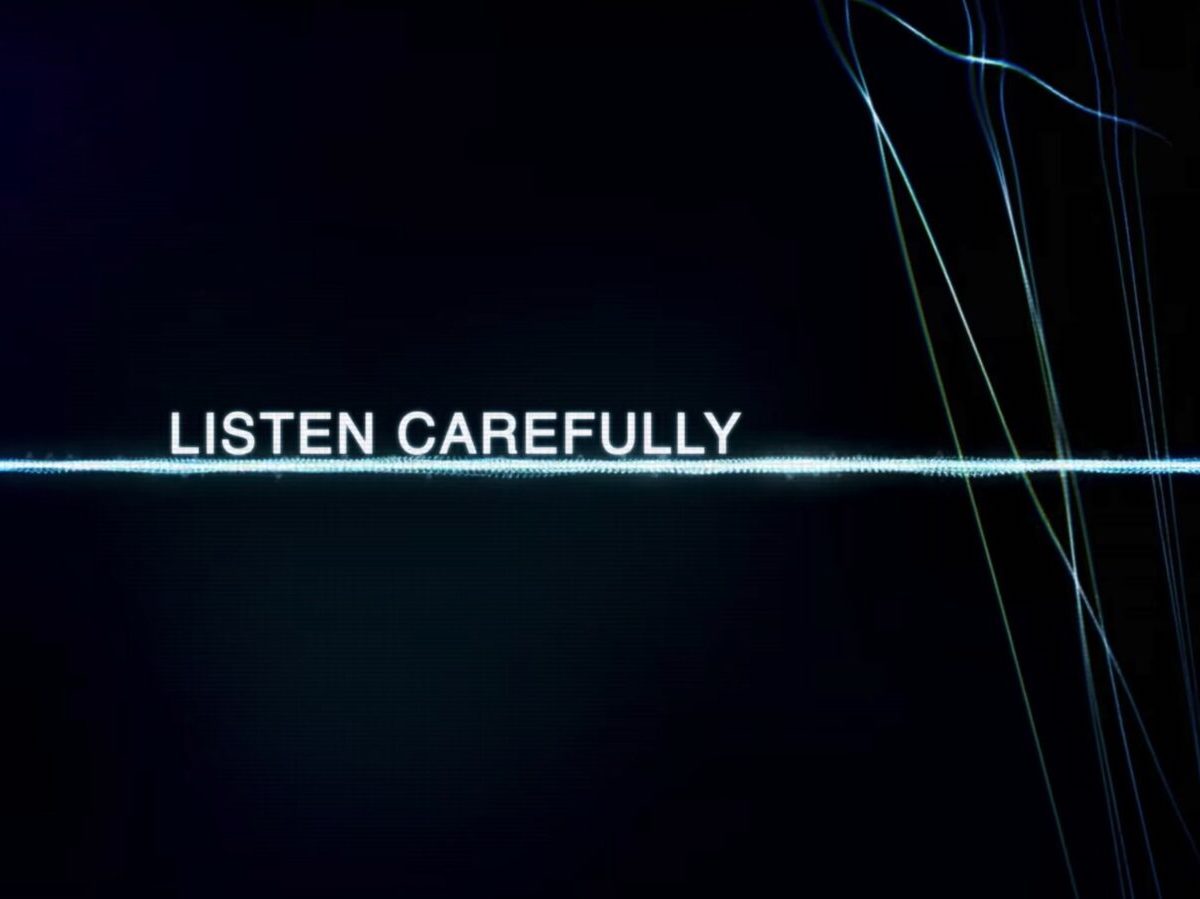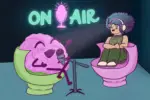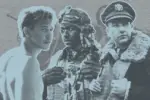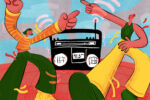“Calls,” a new show on Apple TV+, is doing something unheard of for modern television: It’s skipping the “vision.” Each episode of the show plays over a screen punctuated only by waving call lines and subtitles. The format includes unique “visuals,” but those familiar with radio plays might recognize some of its features.
First, some background on “Calls.” “Calls” is a horror show reworked from a French program with the same premise. The plot involves the appearance of mysterious and deformed figures who do not seem to be “from here,” though whether “here” is our time, reality or planet is left unclear until later episodes of the show. Each episode features either a single phone call or a series of phone calls that unravel the mystery of the demonic creatures waiting to prey on or outright consume our protagonists.
The show is alarming and works itself into a frantic and stressful pace, aided by its lack of visuals. Each episode overlaps through location and subject; though episodes may change locations, the characters are often aware of the events and places of interest, albeit in the way one might be aware of an event or location after flipping through the news. The voice acting for “Calls” features many big names in entertainment right now, including Karen Gillan, Pedro Pascal, Aubrey Plaza and Mark Duplass.
While “Calls” may feel utterly unfamiliar to modern viewers accustomed to the flashy visuals of new horror that often benefits from advancements in practical and special effects, the show actually borrows heavily from the radio play. Radio plays were a popular form of entertainment before televisions entered the average American household. The radio play hit a sweet spot for the public, existing as a story that could be enjoyed in the comfort of one’s own home, without charge.
Families would gather around their radios and tune in to hear weekly programming, much like how some families now have favorite television shows that prompt them to converge on their sofas. The plays would range in subject and style, but many featured a setup like “Calls,” which has recognizable markers and main characters but often omits explicit continuity aside from their most important story arcs. In the early days of television, many shows were adapted from radio plays, largely following the same concept but making clever swaps for visual and auditory cues.
However, this kind of storytelling has largely fallen out of favor with the public. After the popularization of television, why settle for just auditory stories? Some might argue that the medium has been continued by podcasts, specifically scripted ones, but podcasts are more often than not a solitary pursuit, something one listens to on walks or hikes. They don’t require a specific location the way the radio play did, and they certainly don’t invite the same gather-round ambiance. In this way, “Calls” seems a natural fit to continue the legacy, even more so when one considers the advantage of audio-only storytelling to the sci-fi and horror genres.
To that point, there’s also the show’s similarity to one of the most famous, or maybe infamous, radio plays ever broadcasted: “The War of the Worlds.” Adapted from H.G. Wells’ novel of the same name, “The War of the Worlds” radio play was broadcast in 1938 and its subject matter led it to become an entertainment tall tale. The play involves the invasion of aliens and once lured listeners in by pretending to be a normal broadcast, featuring an orchestra show and weather report at the top of each episode. When listeners tuned in unaware of the content, however, the show alarmed many.
Though it is now thought that the reports of mass panic were greatly exaggerated by announcers of the day, they became a staple of the urban myth that rose around the show, and it is undeniable that many found the broadcast unsettling. Police calls in New Jersey specifically recorded 40% more traffic when “The War of the Worlds” was being transmitted.
This kind of drop-into-the-action storytelling style is exactly like what “Calls” uses, with viewers landing right in the middle of a seemingly normal phone call. While it may not have caused the same “mass” panic that “The War of the Worlds” did, it similarly manages to unsettle viewers, especially as it leads them to question the bounds of reality as we know it.
This style of storytelling, one that allows listeners’ imaginations to play alongside the actors and architects of the piece, shouldn’t be lost to the sands of time, nor should the quiet contemplation it builds by relying on a stationary and captivated audience. By bringing back elements of the radio play, “Calls” is reviving a style of broadcast that seemed to have no future in the modern age while paying tribute to the media that paved the way for shows like it.
















